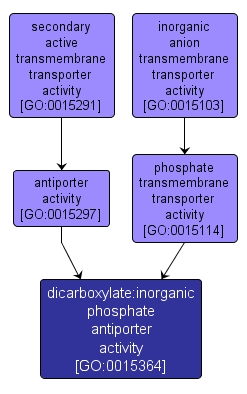GO TERM SUMMARY
|
| Name: |
dicarboxylate:inorganic phosphate antiporter activity |
| Acc: |
GO:0015364 |
| Aspect: |
Molecular Function |
| Desc: |
Catalysis of the transfer of a solute or solutes from one side of a membrane to the other according to the reaction: dicarboxylate(out) + inorganic phosphate(in) = dicarboxylate(in) + inorganic phosphate(out). |
|

|
INTERACTIVE GO GRAPH
|














